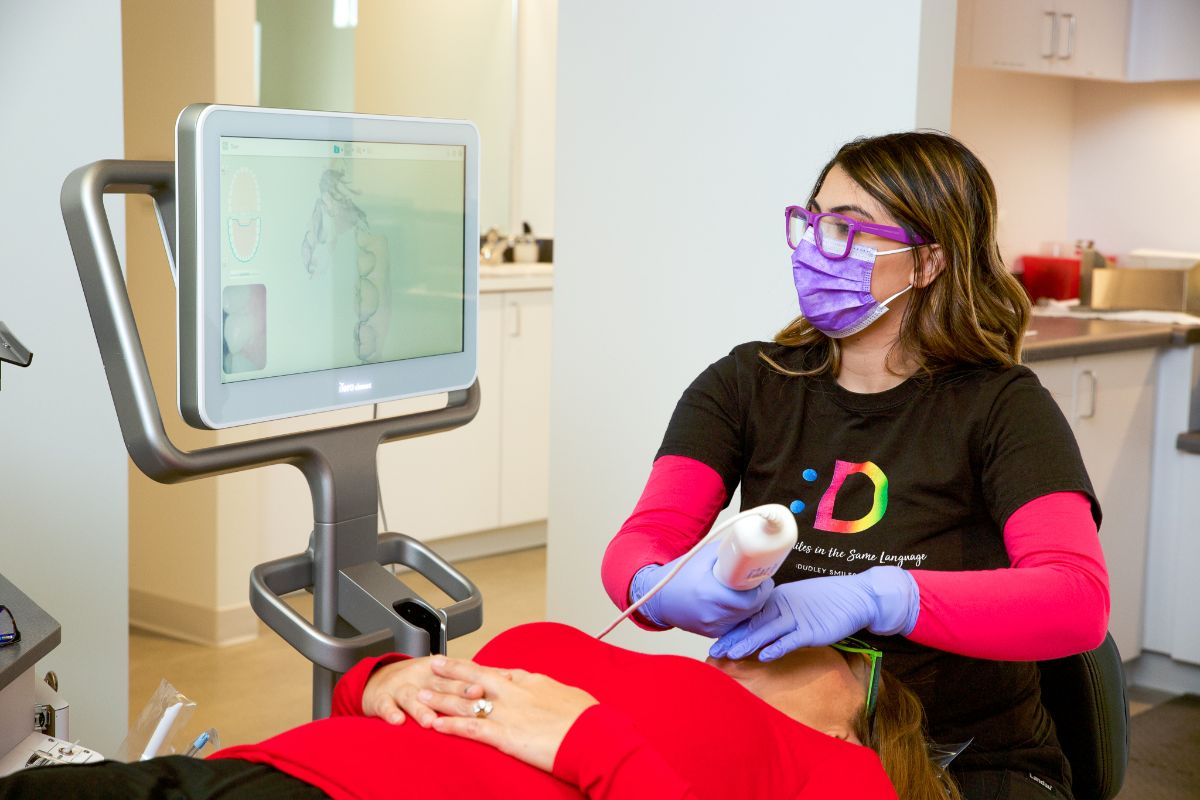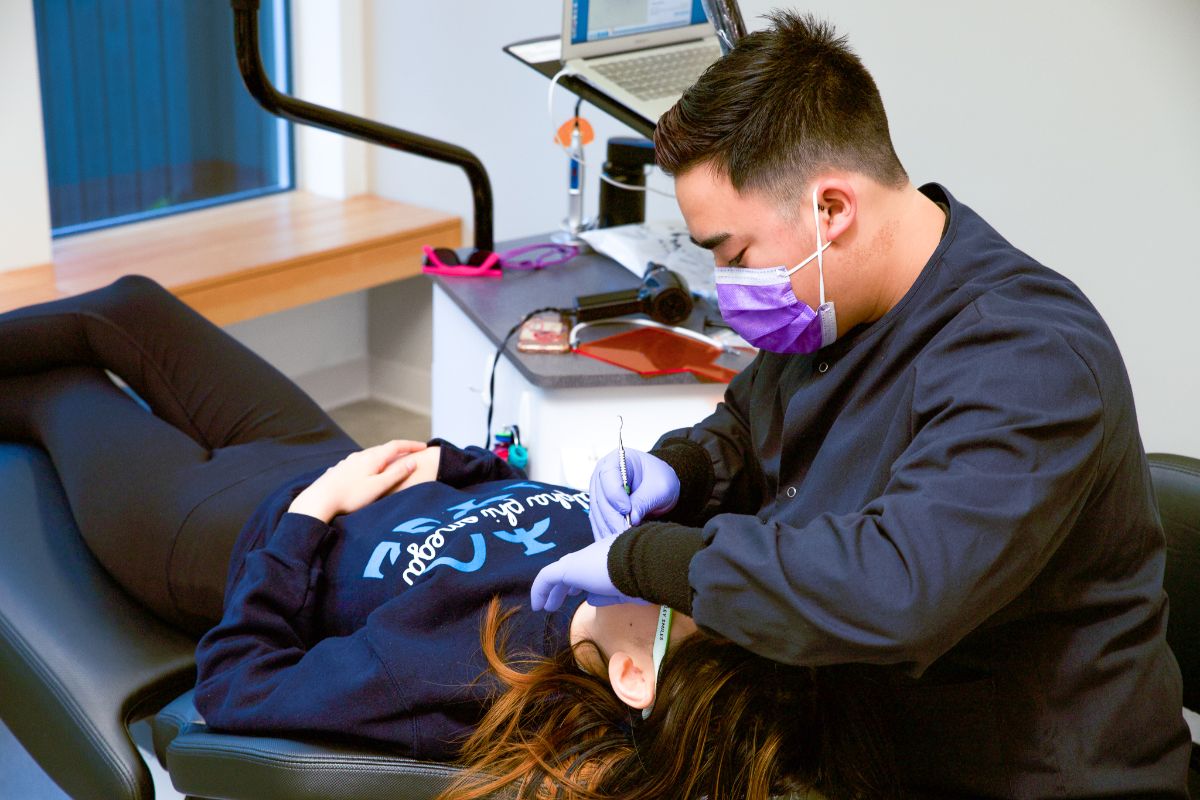Here at Dudley Smiles Orthodontics, we’re proud to offer a variety of unique orthodontic treatment options to patients of all ages in our Kent and Issaquah offices. Our expert team is committed to creating personalized treatment plans that are designed specifically for your unique smile! Using the latest techniques and innovative technology, Dr. Dudley is able to successfully treat a wide range of orthodontic issues, including
- Crowded teeth
- Gaps/Spaces between teeth
- Protruding teeth
- Overbite
- Underbite
- Crossbite
- Impacted teeth
We treat these using a variety of treatment methods, including traditional braces. As the most common type of orthodontic treatment, braces have gone through quite a transformation over the years. Not only are today’s braces smaller and more aesthetically pleasing, but they also move the teeth more efficiently, leading to a better orthodontic experience all around!
Once you decide to pursue braces treatment to improve your oral health and align your smiles, you may wonder what options you have. At your initial appointment, Dr. Dudley will perform an orthodontic examination that will help him determine which treatment option is right for you, your smile, and your lifestyle.
Let’s take a closer look at the types of braces we offer and how they differ, and how they can give you a confident smile you’ll love!
A note about traditional braces
Braces are exceptionally good at fixing complex tooth issues and can work faster at closing gaps and aligning teeth than other treatments might, which has the potential to shorten your treatment time. Because every case is different, treatment time with metal braces will vary from patient to patient. The average is anywhere from 18-36 months. You can often start to see improvement in a short time, which can be very encouraging.
Taking care of your traditional braces can be a little tricky in the beginning, but it gets easier over time. A good dental hygiene routine is essential for oral health, particularly during orthodontic treatment. There are a lot of tools designed to make cleaning braces easier, such as waterpiks to help rinse any hard to reach areas and ortho picks to make flossing easier. We recommend brushing twice a day for at least two minutes each time and flossing every night before bed.
Some foods will need to be avoided while wearing braces in order to protect them, including anything sticky or crunchy since these can damage the brackets and wires. This won’t last forever, though, and will all be worth it once your braces come off and you see your beautiful new smile!
As a patient in braces, you can expect follow-up visits with us every 4-8 weeks or so throughout the treatment process. During these appointments, Dr. Dudley will change the bands that are attached to the brackets and may replace the wire as well. Check-ups tend to be fairly quick, so you can get back to school or work on time! Though there may be some slight residual soreness after each adjustment, it should be temporary. These visits are a very important part of the overall treatment plan and help us ensure the best results in the least amount of time, so try your best not to miss them.
Metal braces
Metal braces are one of the most recognizable symbols of orthodontics, and also the most common type of treatment. Thanks to a mix of stainless steel, nickel, and other high-quality metals, the brackets are very durable and long-lasting.
Modern metal braces are much more comfortable and lighter than they used to be, and they’re also customizable, thanks to a variety of fun colored bands to choose from! These braces deliver excellent results and are especially useful in cases that are more serious or complicated.
Metal braces also tend to be a little more affordable option, since they don’t require some of the more complex technology or expensive equipment that newer treatments do. The overall strength, durability, and cost-effectiveness of traditional braces keep them the top treatment for orthodontics, year after year.
Ceramic braces
Sometimes referred to as clear braces, tooth-colored braces, or aesthetic braces, ceramic braces function in much the same way metal braces do, with the added benefit of semi-translucent or tooth-colored ceramic brackets. While ceramic braces are about the same size and shape as metal braces, they’re better able to blend in with a patient’s natural smile for a more subtle straightening option.
Although ceramic braces are tough, the material they are made from can be prone to chipping or cracking. Since metal braces can hold up to more pressure than ceramic ones, they may be a better option for those who have severe corrections that need to be made.
Ceramic brackets are often slightly costlier than metal brackets, as well. Since they can be more expensive and are more prone to breaking, we believe ceramic braces are generally better suited to adults and older teens. That said, ceramic braces can be an excellent option for many patients. They are an incredibly discreet and efficient way to straighten smiles!
Find braces that work with your smile at Dudley Smiles Orthodontics
At Dudley Smiles Orthodontics, we know every smile is unique, and what works for one patient may not be a good choice for another. That’s why Dr. Dudley creates a customized treatment plan for every patient! With his education, skills, and experience, you can be sure that he’ll only recommend the course of treatment that’s best for your smile.
If you’re in Kent, Issaquah, or the Sammamish area, we’d love to give you more information on how braces can give you a healthier, straighter smile. Get in touch today to schedule your FREE consultation!


